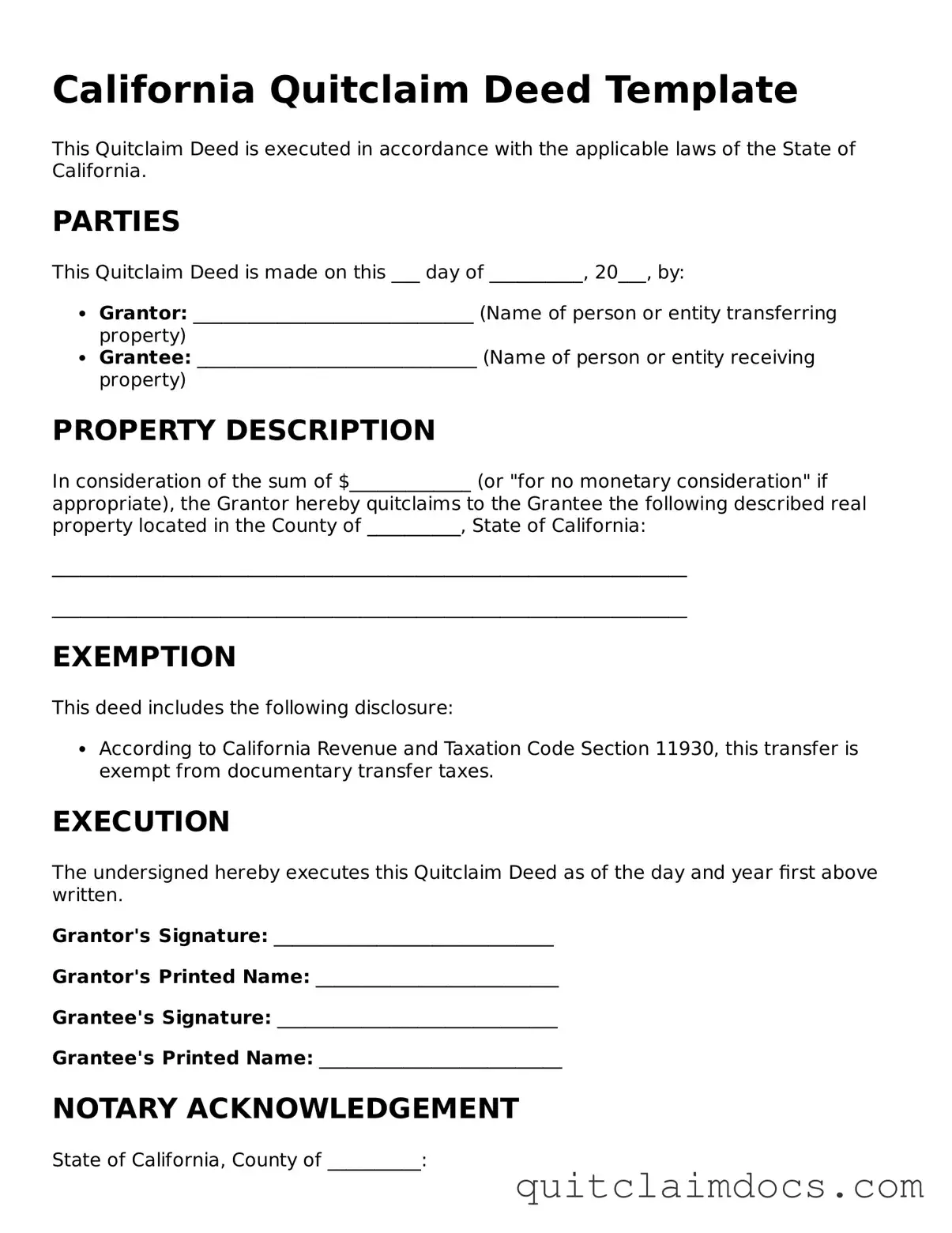California Quitclaim Deed Template
This Quitclaim Deed is executed in accordance with the applicable laws of the State of California.
PARTIES
This Quitclaim Deed is made on this ___ day of __________, 20___, by:
- Grantor: ______________________________ (Name of person or entity transferring property)
- Grantee: ______________________________ (Name of person or entity receiving property)
PROPERTY DESCRIPTION
In consideration of the sum of $_____________ (or "for no monetary consideration" if appropriate), the Grantor hereby quitclaims to the Grantee the following described real property located in the County of __________, State of California:
____________________________________________________________________
____________________________________________________________________
EXEMPTION
This deed includes the following disclosure:
- According to California Revenue and Taxation Code Section 11930, this transfer is exempt from documentary transfer taxes.
EXECUTION
The undersigned hereby executes this Quitclaim Deed as of the day and year first above written.
Grantor's Signature: ______________________________
Grantor's Printed Name: __________________________
Grantee's Signature: ______________________________
Grantee's Printed Name: __________________________
NOTARY ACKNOWLEDGEMENT
State of California, County of __________:
On this ___ day of __________, 20___, before me, ________________________, a Notary Public in and for said State, personally appeared _______________________, known to me to be the person who executed the within instrument. The person acknowledged to me that they executed the same.
Notary Public Signature: __________________________
My Commission Expires: ____________________________
